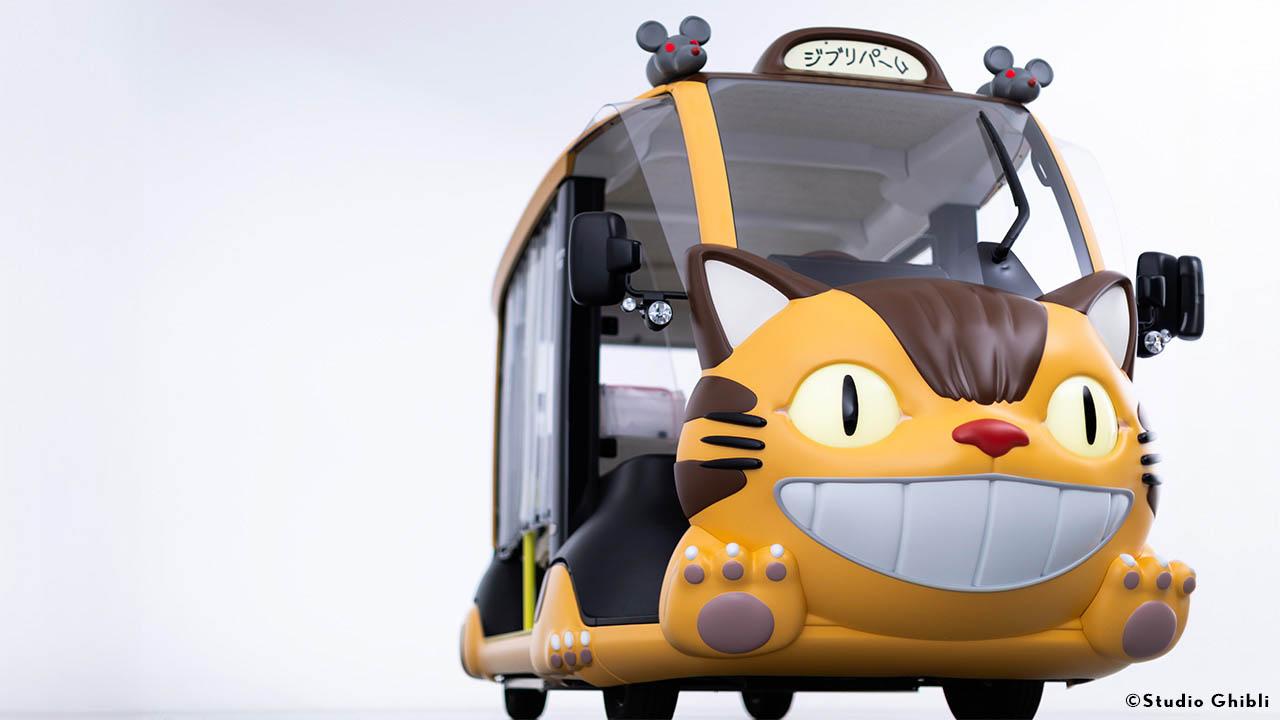
From the glowing eyes to the plush furry seats, Toyota's designer reveals the story behind the APM Cat Bus.

Toyota’s APM Cat Bus was unveiled to the press in a ceremony on February 27, 2024.
It was modeled on the iconic bus in which Satsuki and Mei hurtle through the night sky in the Studio Ghibli film My Neighbor Totoro.
The design is based on Toyota’s Accessible People Mover (APM), a low-speed, short-distance BEV used at the Tokyo 2020 Olympic and Paralympic Games. But let’s jump right into the details.
Sink into fur-like seats…
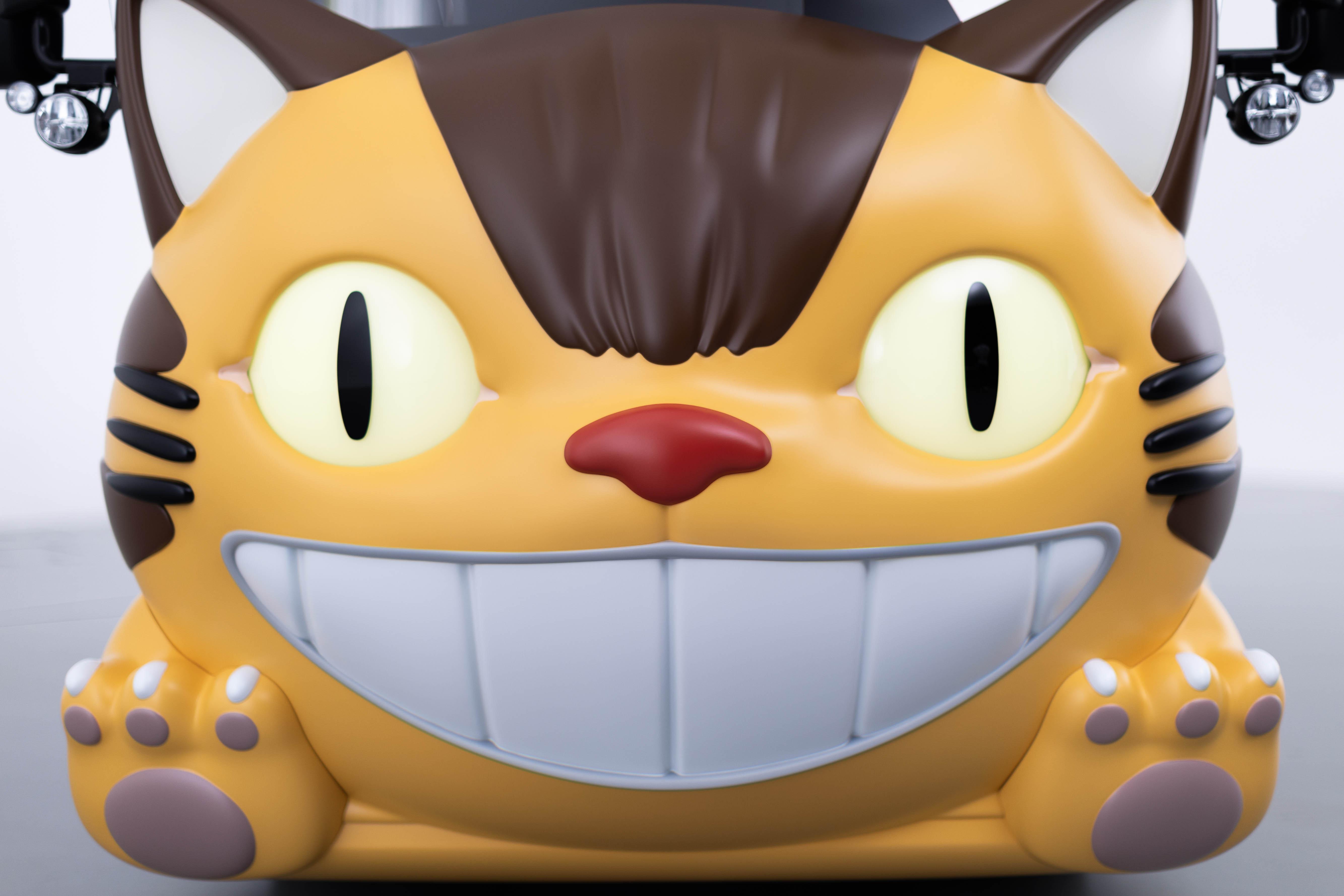
You can’t help but smile. This whimsical design is the work of Naoki Nagatsu, Professional Partner at Toyota’s Vision Design Division, and his team, in close communication with Studio Ghibli director Goro Miyazaki.
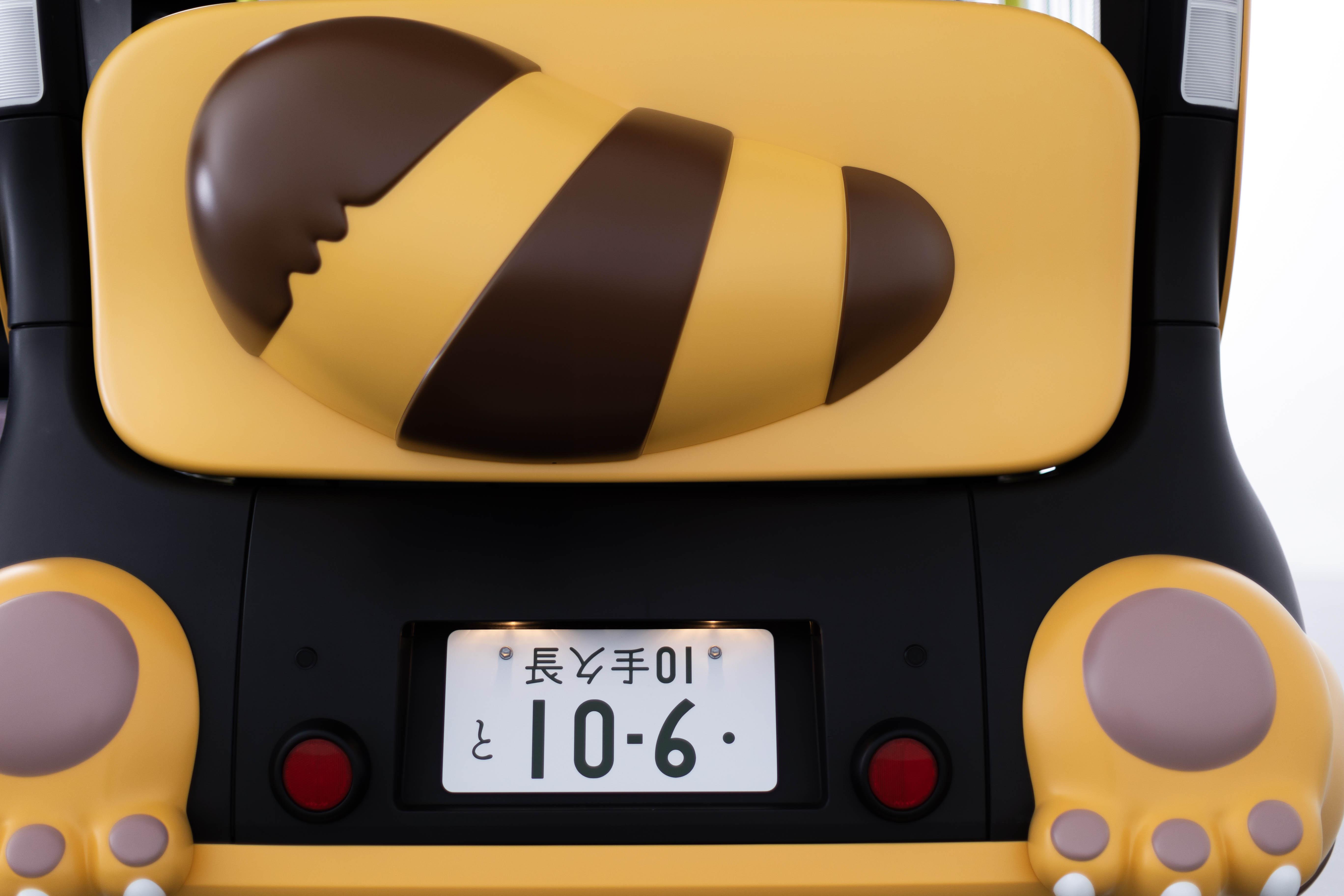
The big tail, the adorable paws. Since the vehicle isn’t bound for public roads, it even has a decorative license plate whose numbers, as per Goro Miyazaki’s idea, contain a hidden meaning when sounded out in Japanese.
Any guesses what it might be?

The steering wheel, instrument panel, and other details are colored to match the cat's fur.
“We came up with a two-tone palette of ‘cat brown’ and ‘cat beige,’ created to fit the car’s overall color scheme,” says Nagatsu, the designer. “After speaking with Goro Miyazaki, we worked to bring out the unique textures of each material.”
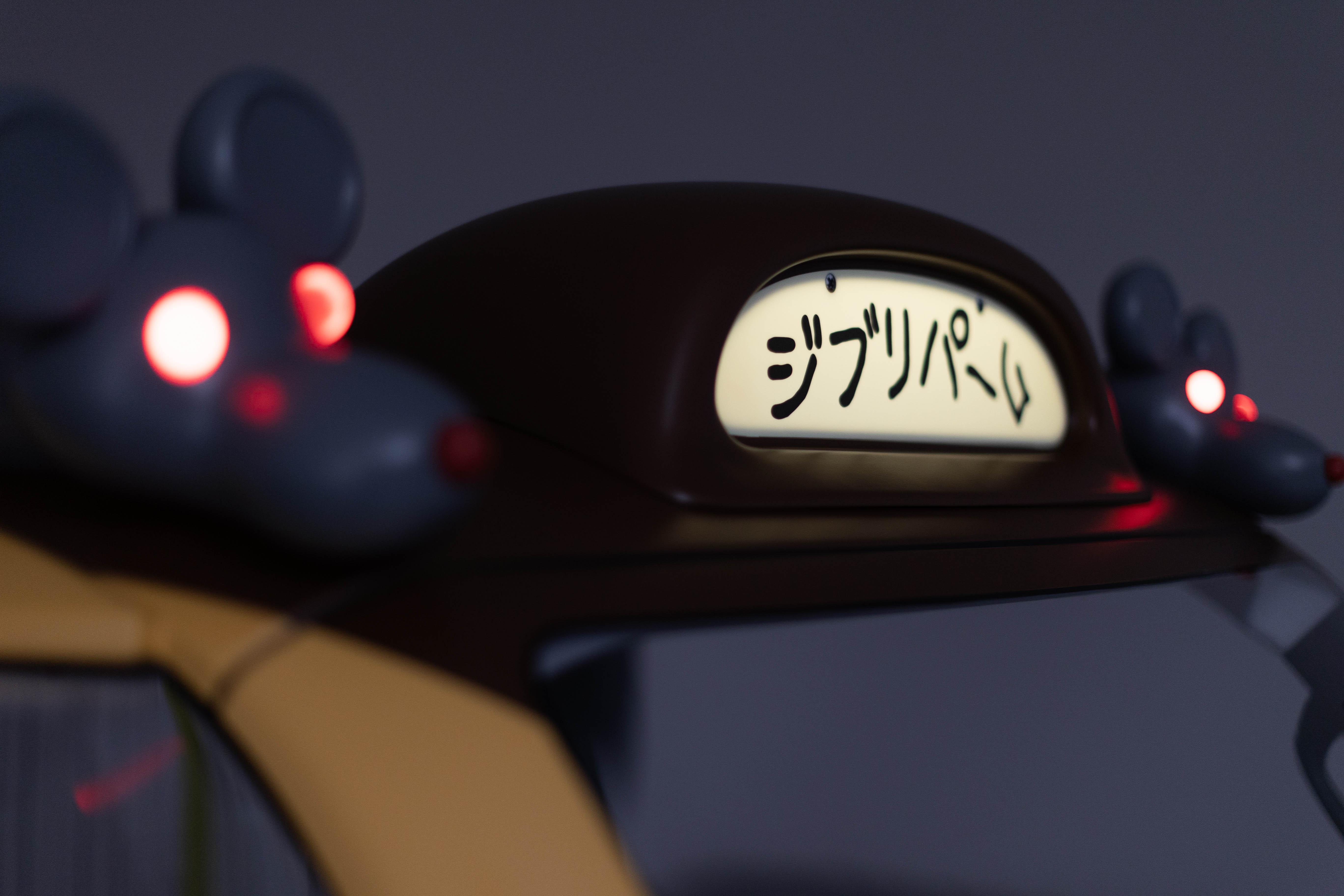
The Cat Bus’s destination reads “Ghibli Park.” To evoke that retro mood of the late 50s and early 60s, the designers were very particular about lighting, going so far as to dim the destination display.
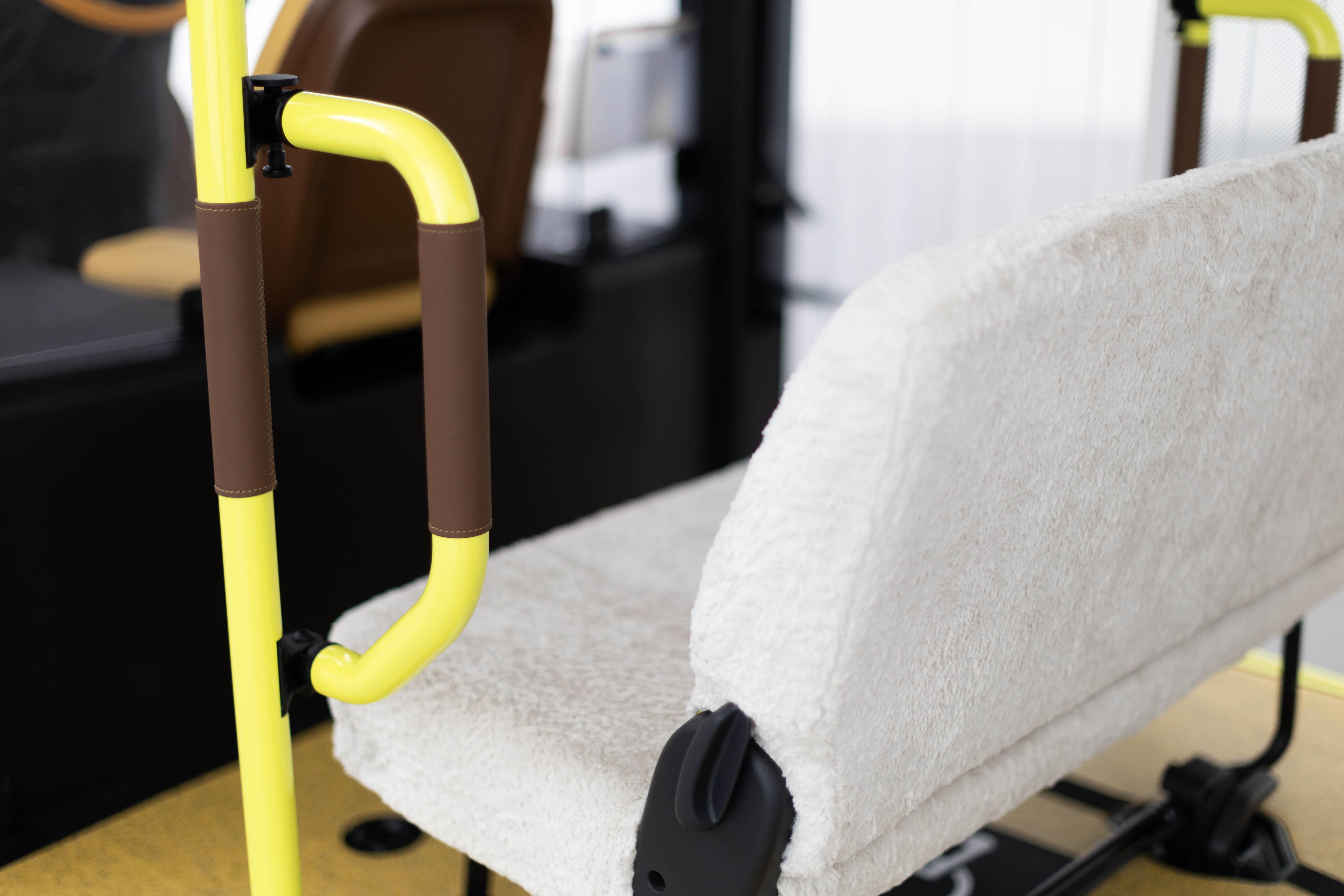
And no Cat Bus would be complete without the furry seats that so delight Satsuki and Mei. The seat covers are removable for easy cleaning.
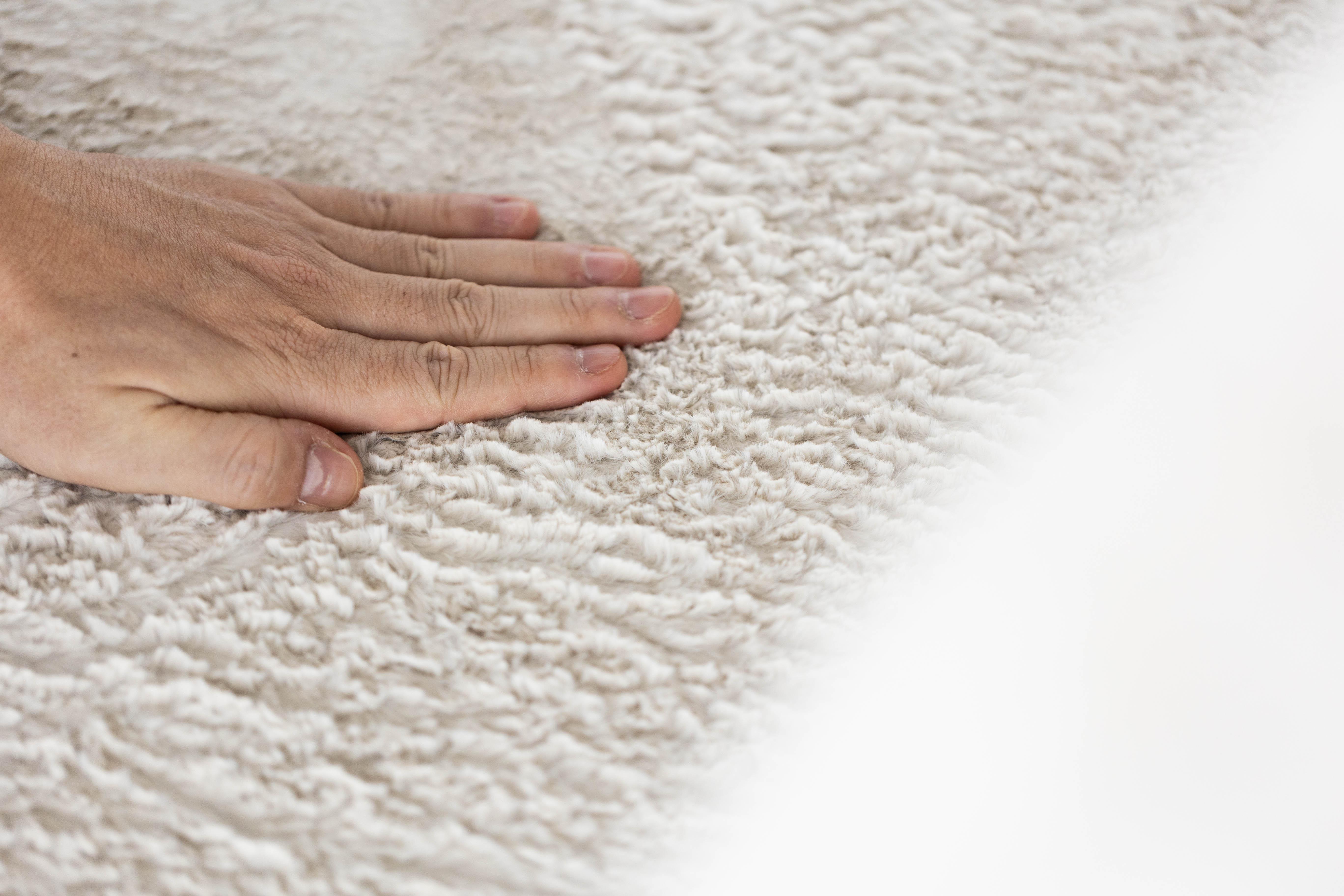
Soft and fluffy to sit on, they make you feel like you’ve stepped right into one of the film’s most memorable scenes. Overhead, the roof is also lined with the same fur.
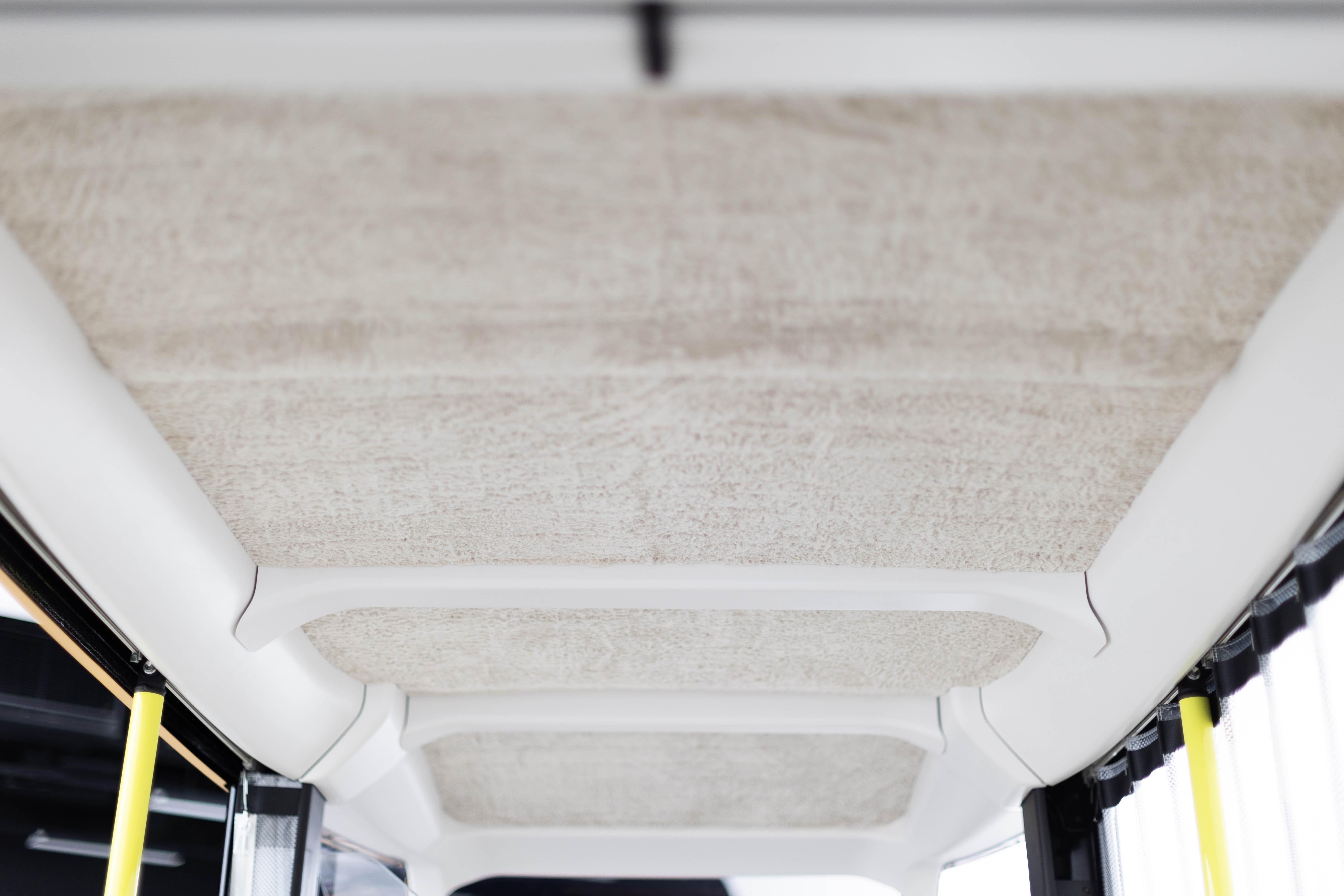
The team’s attention to detail can be found in every component, so let’s delve a little deeper.
Eyes facing different directions?
The concept for the APM Cat Bus was “fantastical feline shapeshifts into APM.” Bringing out the details required the unique carmaking skills of veteran designers.
Director Goro Miyazaki placed particular importance on those otherworldly eyes.
Nagatsu
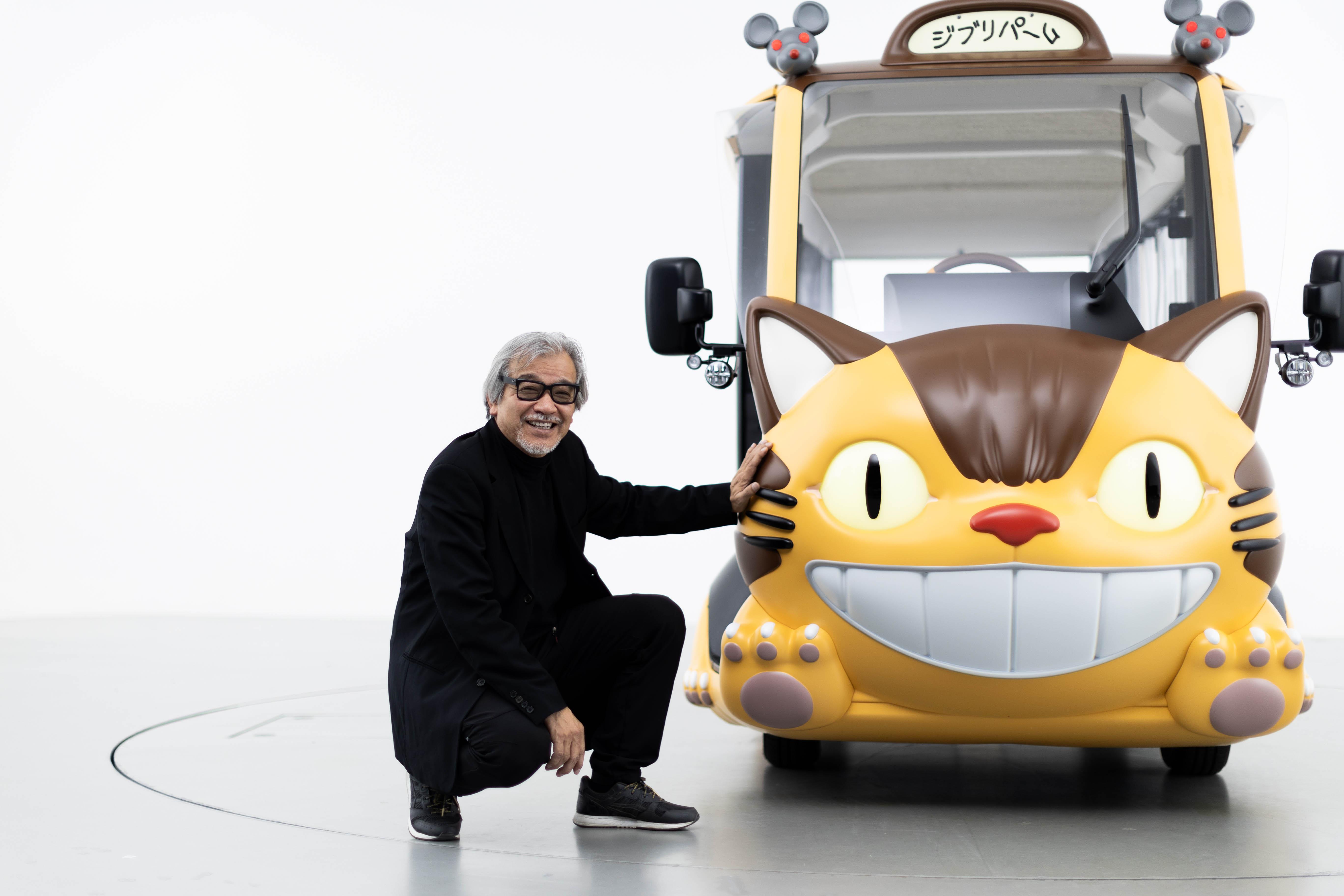
The two eyes don’t actually face forward but slightly out to the sides. This was Miyazaki’s advice for achieving that supernatural look, but positioning the left and right pupils nicely on the spherical eyeballs was difficult.
To begin with, we had to get the car sitting perfectly level.
Normally, this is done by adjusting the tire pressure on both sides, front and back, while using a laser measuring device to ensure the vehicle is level, but “you can pretty much tell by looking at it,” Nagatsu says casually.
Incidentally, the APM Cat Bus’s steering wheel is centered in the vehicle—not placed on one side, as is usual—because the weight difference would cause a slight lean if the tire pressure were not adjusted. Now that’s fine-tuned craftsmanship.
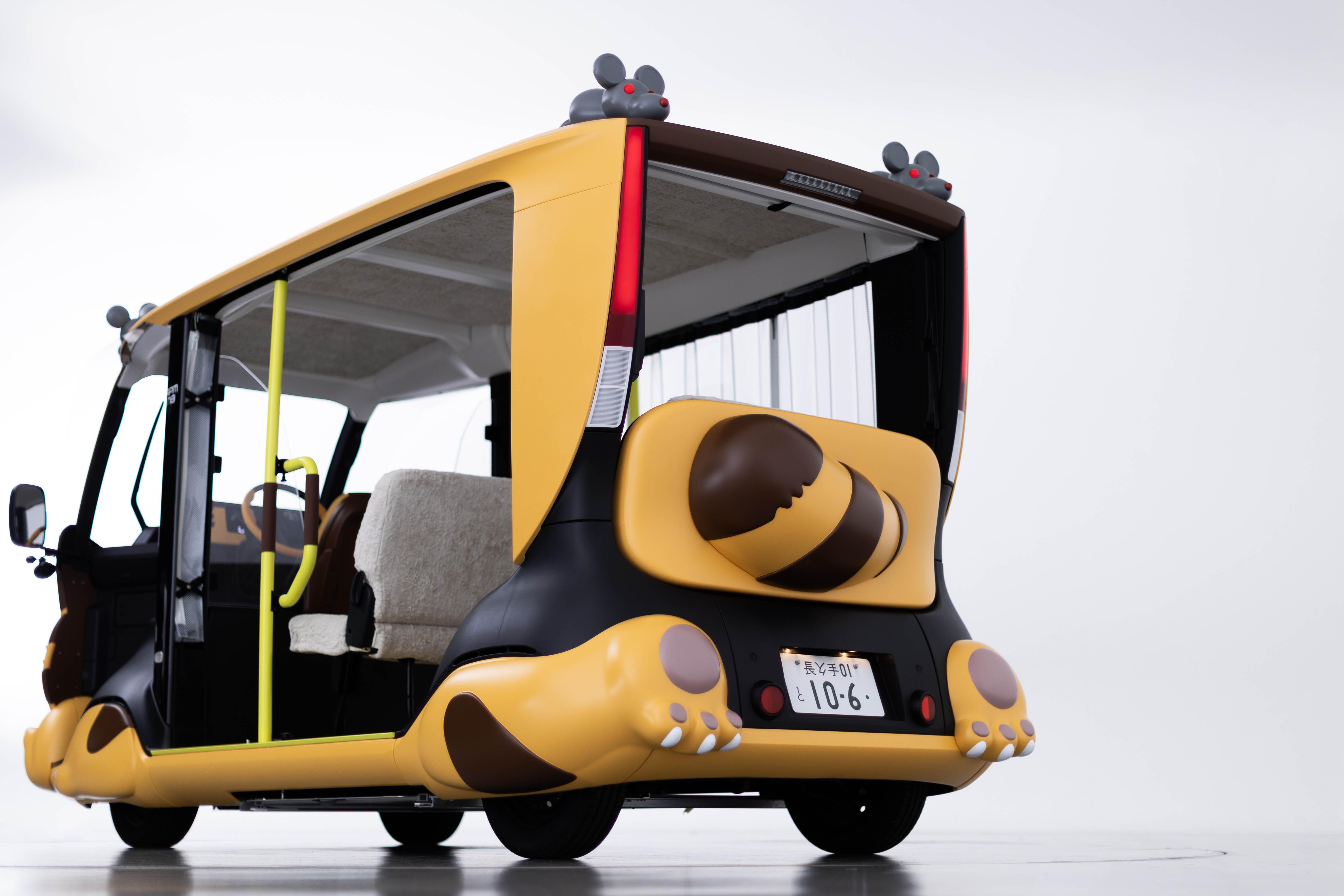
Yet the biggest challenge in designing the APM Cat Bus was the problem of moving from on-screen animation to three-dimensional vehicle. While animated characters are drawn with outlines, no such contour lines exist on real-world objects.
Looking closely at the finished APM Cat Bus, you can see that the “cat brown” sections are raised rather than outlined.

Nagatsu
It’s not simply a matter of raising certain features and painting them in different colors.
For example, we add light gray in the space between the mouth and teeth. What you would call the lips on a person we painted in our “cat lips” color, and the teeth in “cat tooth” white, which is neither too bright nor too dark. Although the nails are also white, they are done in a slightly different shade.
We also took into account how it looks from a child’s height, rendering the silhouette through form and coloring rather than painting black outlines as in the animation.
こうした微細な塗り分けにより、輪郭線に代わる立体感を出しているわけだ。
Nagatsu

While a real cat doesn’t have any distinct “boundaries” between its fur colors, for the APM Cat Bus, we raised sections of different colors.
With this approach, the color boundaries actually end up slightly different between the data and the real three-dimensional molding. That makes the painting difficult. I felt a great sense of accomplishment seeing the designers and painting personnel working together as a team through countless revisions.
A veteran’s instincts and know-how are more than mere intuition. They are the culmination of meticulous attention to detail and logic underpinned by experience—the skills of a carmaking professional.
On the next page, it’s time to see how the cat’s glowing eyes come to life at night.

